GPR Stabilizer Pro Kit
Company: GPR Stabilizer
Price: $675
- Reduces head shake.
- Fairly simple installation.
- Can give you more control of the bike.
- Some dislike the stabilizer always damping.
- On the expensive side but they offer discounted solutions.
What it is
- Steering Stabilizer
- Upper Triple Clamp with Bar Mounts
- Steering Stem Nut
- Stablilizer Post
Steering stabilizers are a common addition to any off-road racer’s bike and one of the more popular companies producing them is GPR. The father and son duo of Ralph and Randy Norman set out to produce one of the best steering stabilizers on the market for street bikes, off-road bikes, and ATV’s. They provide their products to top teams like Robby Bell and the Precision Concepts team and the KTM Factory off-road team. They are currently on their fourth version with the V4 system which is what we tested. Additionally, they offer two different setups: the Pro Kit and the Fat Bar. The Fat Bar kit includes a stabilizer, post, steering stem nut, and bar mounts that bolt into the stock triple clamps. The Pro Kit includes the stabilizer, post, steering stem nut, and an upper triple clamp that replaces the stock clamp.
How it works
- Reduces any head shake and assists in bike handling.
- Easy installation.
- Always damping unlike other stabilizers.
Steering stabilizers seem to be a controversial product in the dirt bike world. Some people swear by them and put them on every motorcycle they own while others refuse to use them. Stabilizers are designed to do exactly what their name states, stabilize the motorcycle by affecting how easily the front end turns or moves by damping the steering. Off-road types work the best in high speed, rough terrain while others like the one that was standard on Honda CRF motocrossers helps the bike stay down in the turns. We used the GPR Pro Kit on both a Beta 430RR and a Yamaha YZ250FX. Our testing ranged from high speed sand washes and ridges to tight, slow speed single track and everything in between. Our testers have been using all kinds of stabilizers for years and know everything there is too know about them.
The GPR stabilizer does a very good job of reducing head shake which is its primary function for off-road. Typically when coming into a large set of braking bumps or going across a rough straightaway at high speeds, the bars will want to shake on even a well set up bike, shake violently on worse setups. The stabilizer reduces this drastically and in some cases, completely. This not only reduces the risk of crashing, but also the amount of energy expended. Likewise, it gives you more confidence when charging through a brutal section of bumps.
The installation of the Pro Kit is pretty easy and straightforward. If you’ve never done it before, it comes with a set of instructions that are very detailed and even give you torque specs for the triple clamp bolts and steering stem nut. Very important is adjusting the pin height on the post. It needs to be flush with the arm on the steering stabilizer or it will hit the underside of the stabilizer when the bars are turned and effectively ruin the stabilizer. Another suggestion when setting the pin height is placing some sort of spacer like a zip-ty between the post and the bottom of the arm. During the race, the pin on the Yamaha raised up slightly from the position we mounted it in and it came in contact with the stabilizer. Luckily it didn’t do too much damage or affect the performance, but having a spacer is a cheap and easy way to keep this from happening.
The GPR Pro Kit worked perfectly on the Beta during the Glen Helen 24-Hour. Every rider felt very comfortable in the high speed sections even as the course got rougher. The stabilizer did a great job keeping the bike under control and lessened the fatigue on the riders. After 24 straight hours of abuse, the stabilizers on our bikes were still working perfectly and we all agreed that the addition of the product to both of the DBT machines was extremely beneficial and helped us to maintain our pace even as our riders got tired and the course got rougher.
The GPR stabilizer features a single knob which is used to adjust the amount of dampening applied. It ranges from 1-8 with 1 being the lightest feeling and 8 being the heaviest or hardest to steer. Depending on the conditions, I typically have the knob running on 3 and will occasionally adjust it to 2 or 4 depending on the conditions. The difference from 1-4 goes in smaller steps while the gaps from 5-8 are a little more drastic with the standard oil.
One of the big differences between the GPR stabilizer and other brands is that the GPR’s dampening is always working. Whether you are turning your bars to the right or left or just turning them back to center it’s always dampening. Some other brands only dampen when you’re leaving center and not when you return back to center. Some riders prefer one style over the other for various reasons. If you have only ridden with the GPR setup, like some of our testers, you may not notice or dislike how it works. Other riders who had used various types had preferences that ranged from, “take this thing off the bike” to “I love this GPR because it is so simple and easy to adjust quickly.” Most just know the improved stability feel any bike gains with a steering damper and are pleased with the addition and don’t say much more.
The riders that disliked the GPR felt it had too much damping even at position #1 but we did not try a lighter oil with these guys. Most were very accustomed to the Scotts Damper or Pro Moto Billet Damper and the adjustment that allows almost no low-speed damping and the free back to center while still kicking in and damping on a hard hit. Frankly it is like chocolate and vanilla ice cream. Just different ways of trying to accomplish the same thing. Some riders who had never ridden with a damper definitely appreciated the added stability but stiffer settings also had them feeling out of balance on slower or tighter sections. Once they learned how quickly and easily (on the fly even, though that is not recommended) they could change the setting everything was better. Some even liked the ability to go from position 8 (stiffest) to position 1 (softest) in one click. The knob runs 360 degrees and does not come unscrewed.
The GPR is less complicated in adjustment with a single adjuster as opposed to multiple adjusters for high and low speed damping and the range of the sweep. It has damping that runs till the last 15 degrees at the tightest or farthest sweep of the handlebar range where there is no damping to make tight turning and balance easier.
Another benefit of running the GPR system is it mounts under the handlebars and is shorter than some others in height. It mounts in a sleek way and doesn’t raise the handlebars from the stock height if you purchase the Pro Kit. If you just buy the bar mounts that bolt into the stock clamps, it will raise your bars around ½ - ¾ inch.
GPR recommends servicing the damper once a year and will do that service for free if you do not want to do it yourself. We have been running these dampers on bikes for years without any service and they have held up to the abuse and still perform like new.
Overall, the GPR setup is a quality purchase and is almost a necessity when racing off-road. The added stability it provides along with comfort, confidence, and reducing energy output. The installation was fast and easy and all the American made parts are high quality.
Leave a Reply
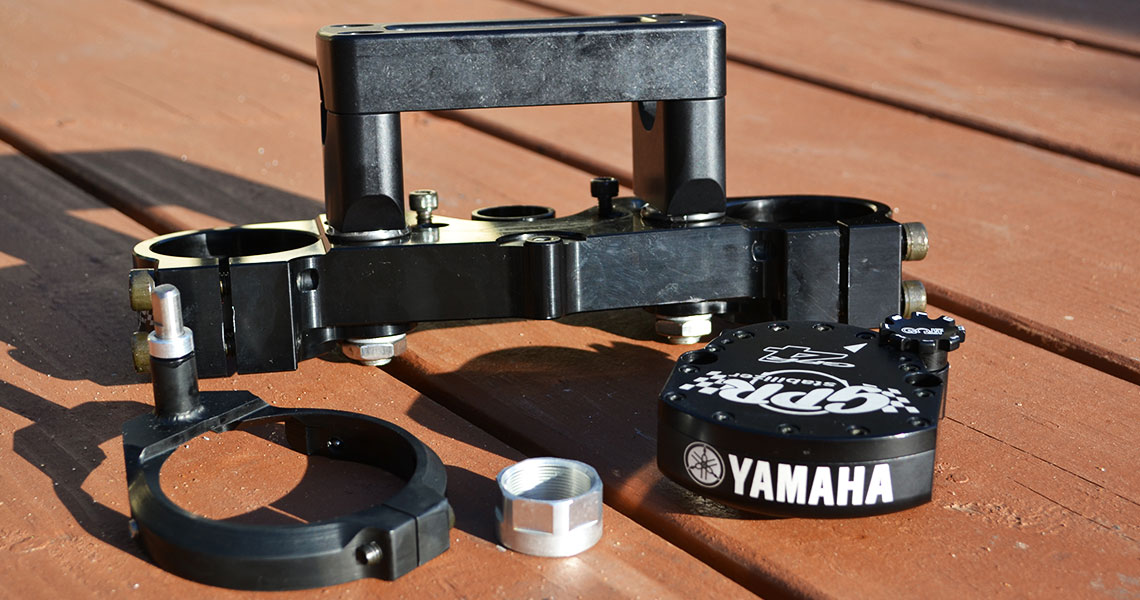

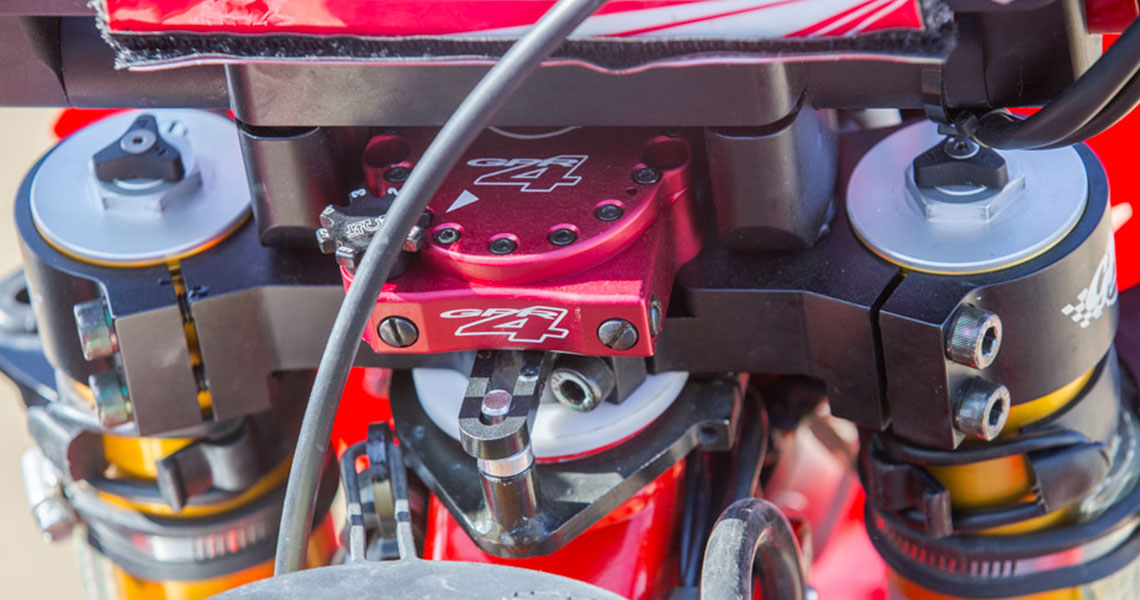
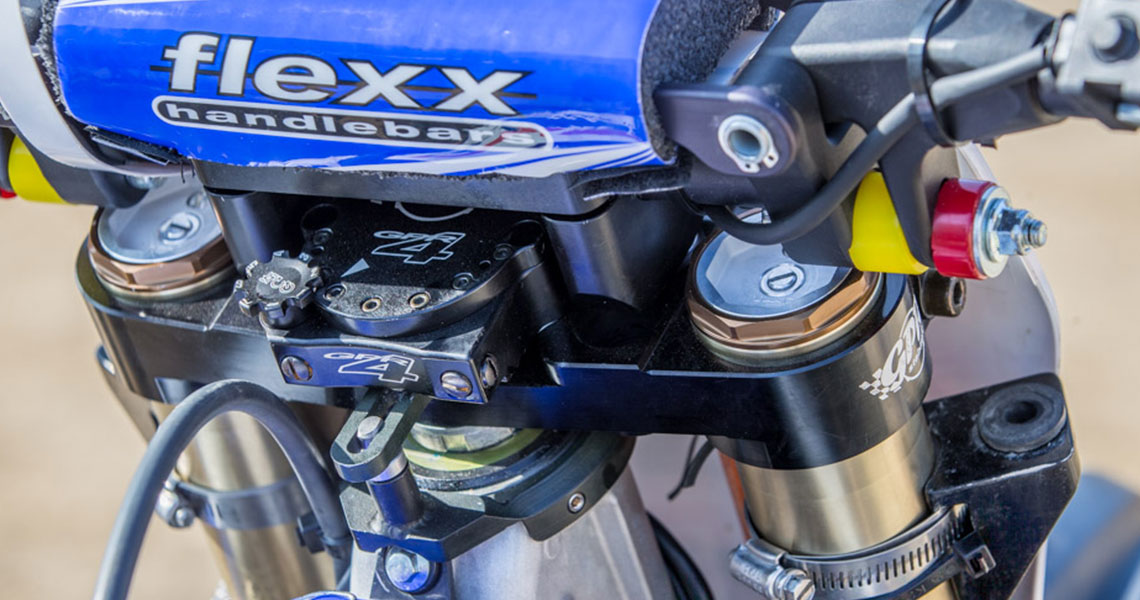

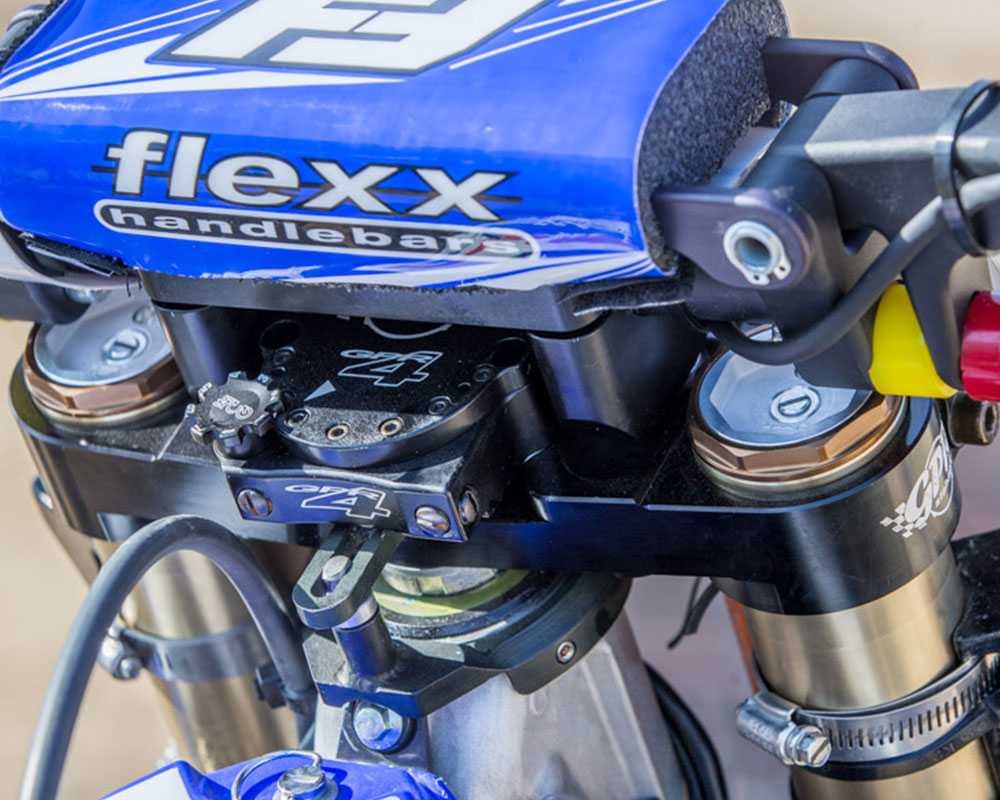
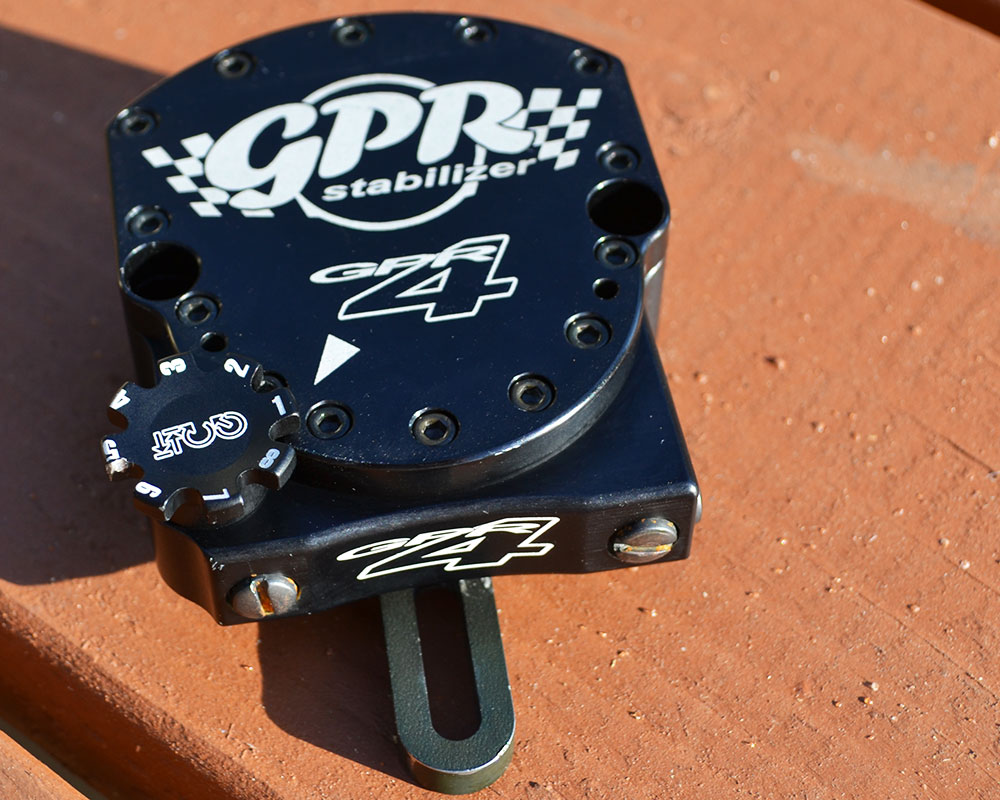


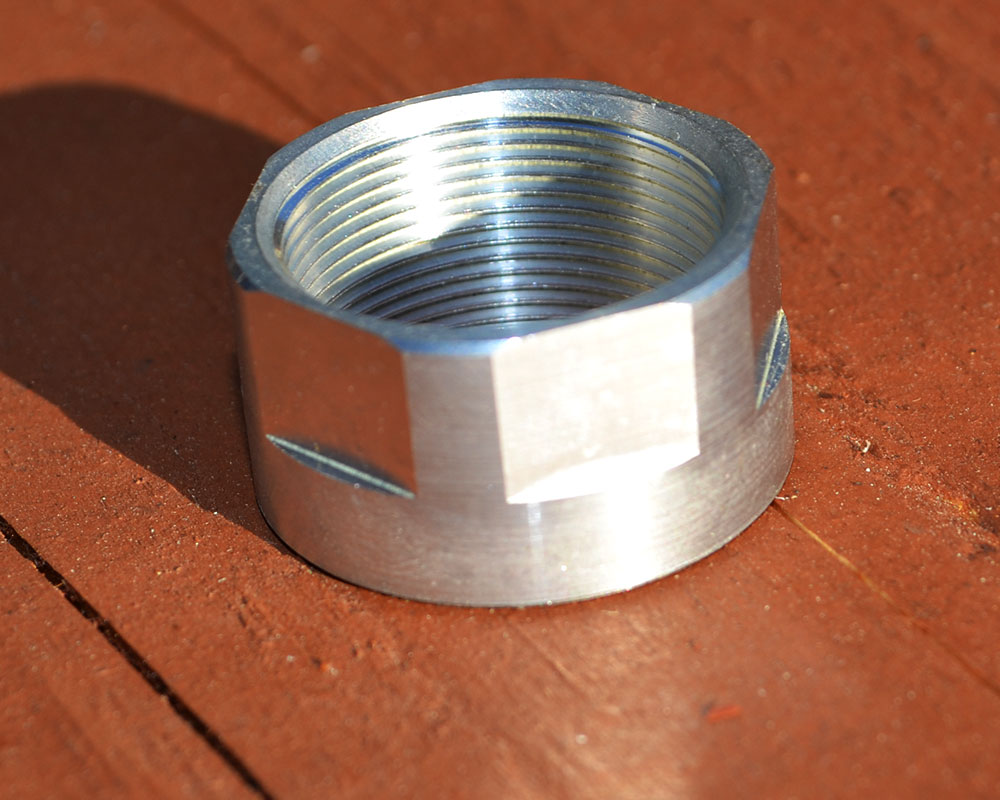

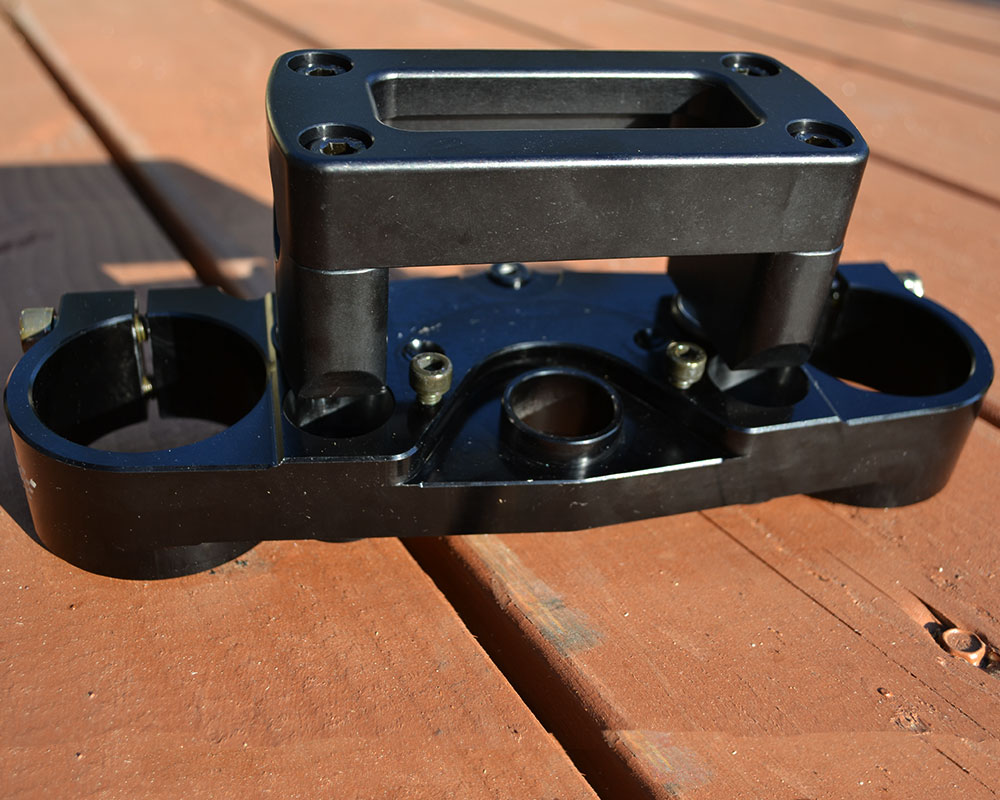
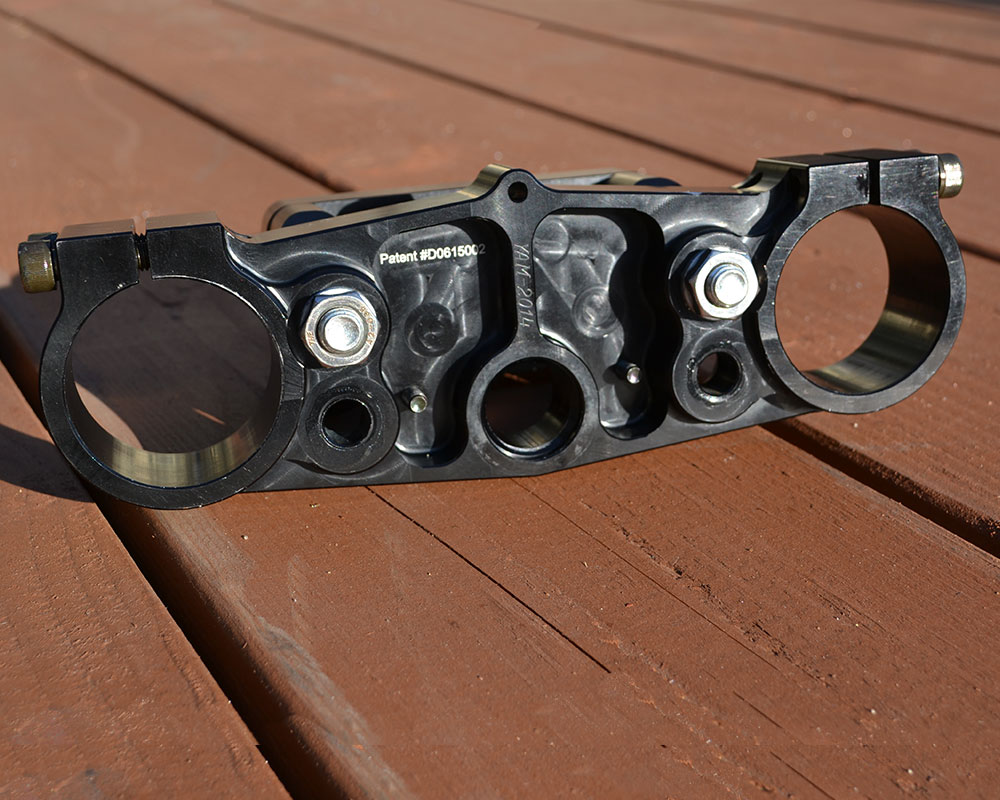

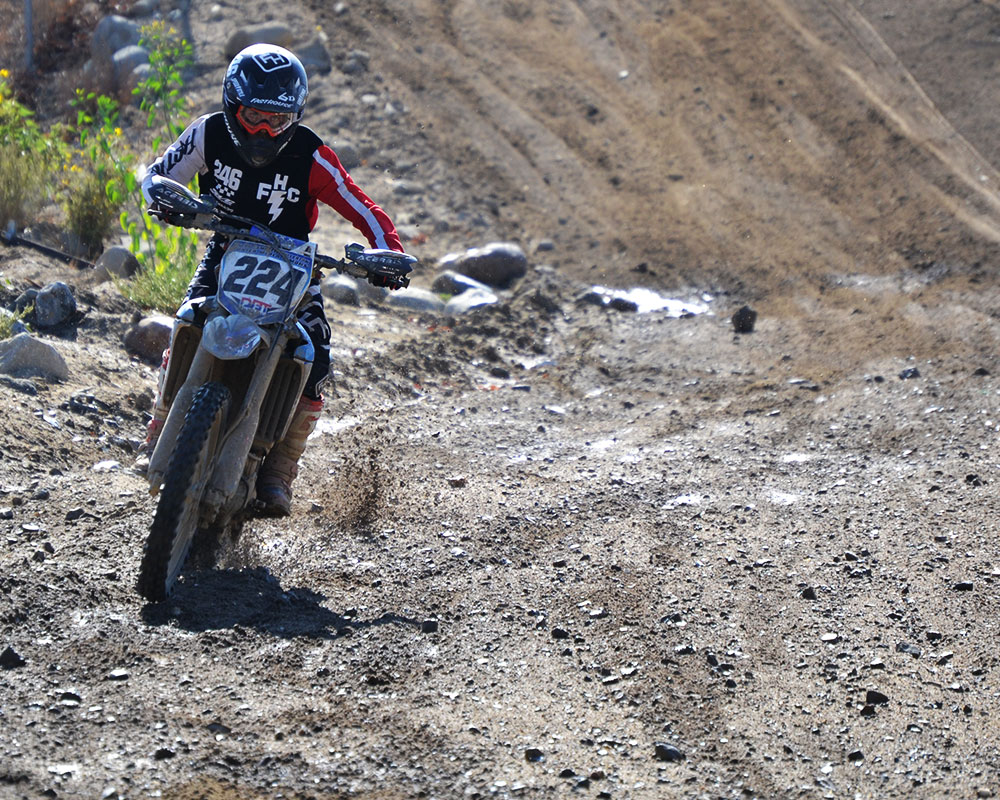

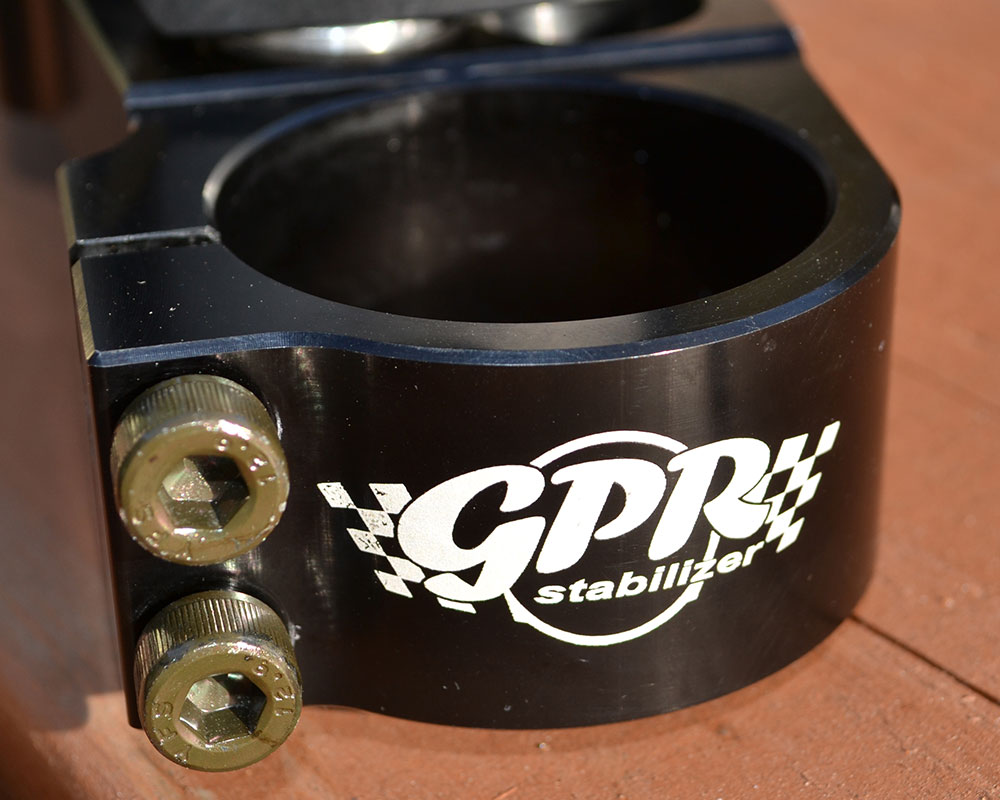
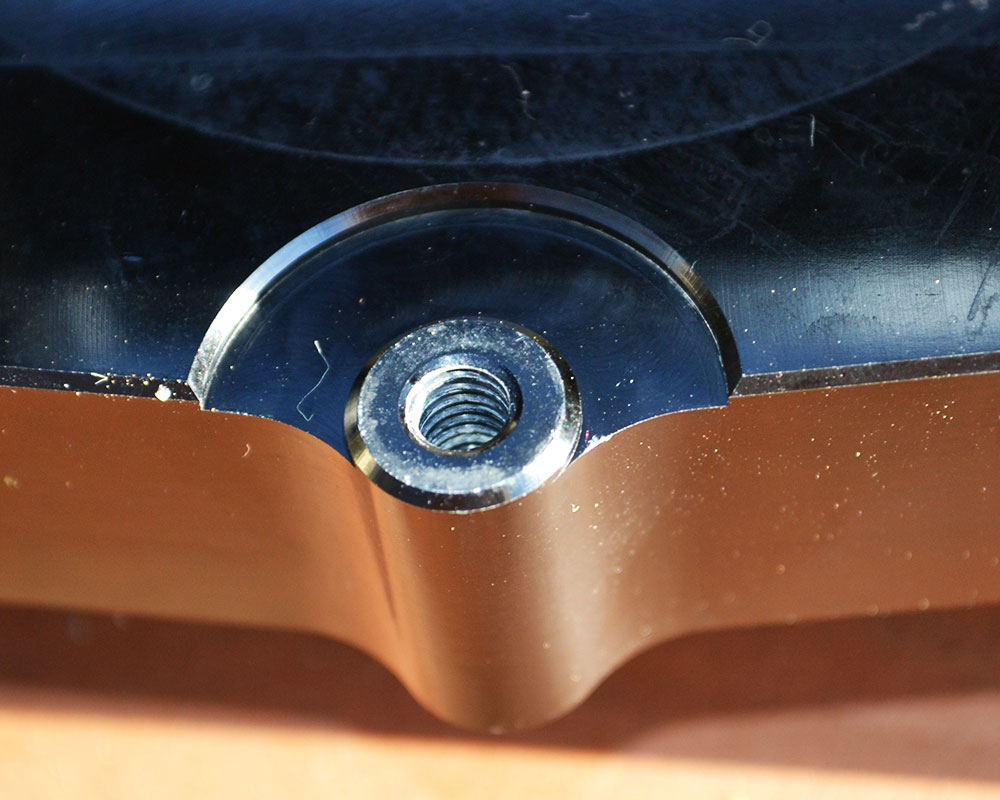


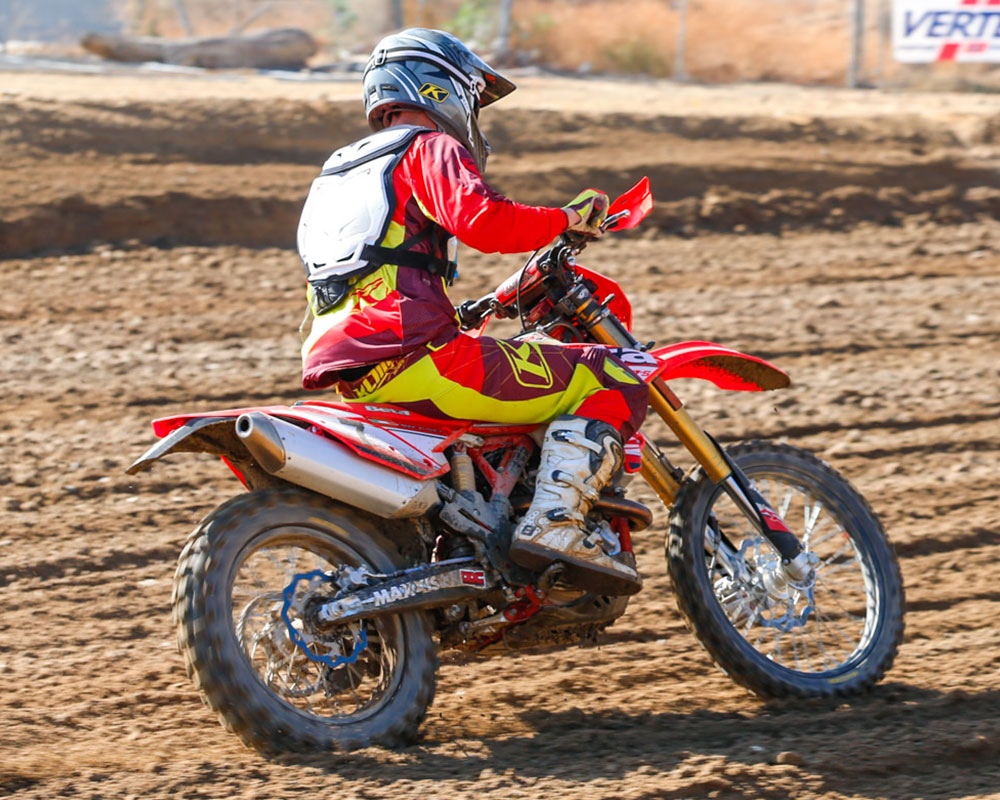
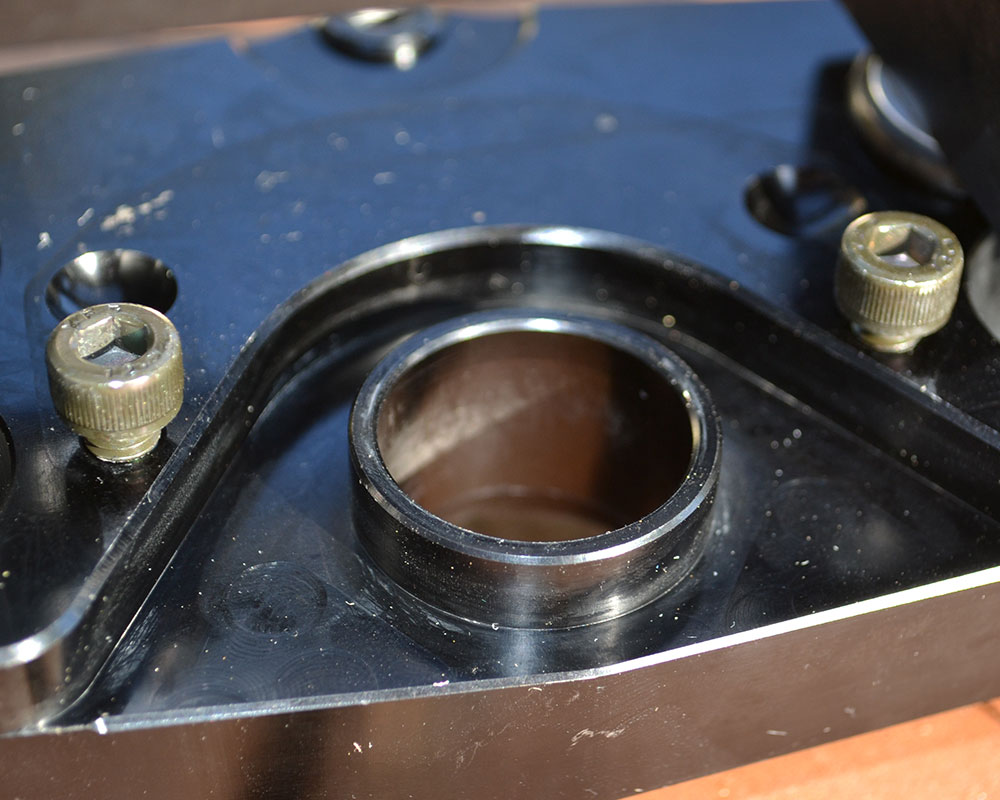


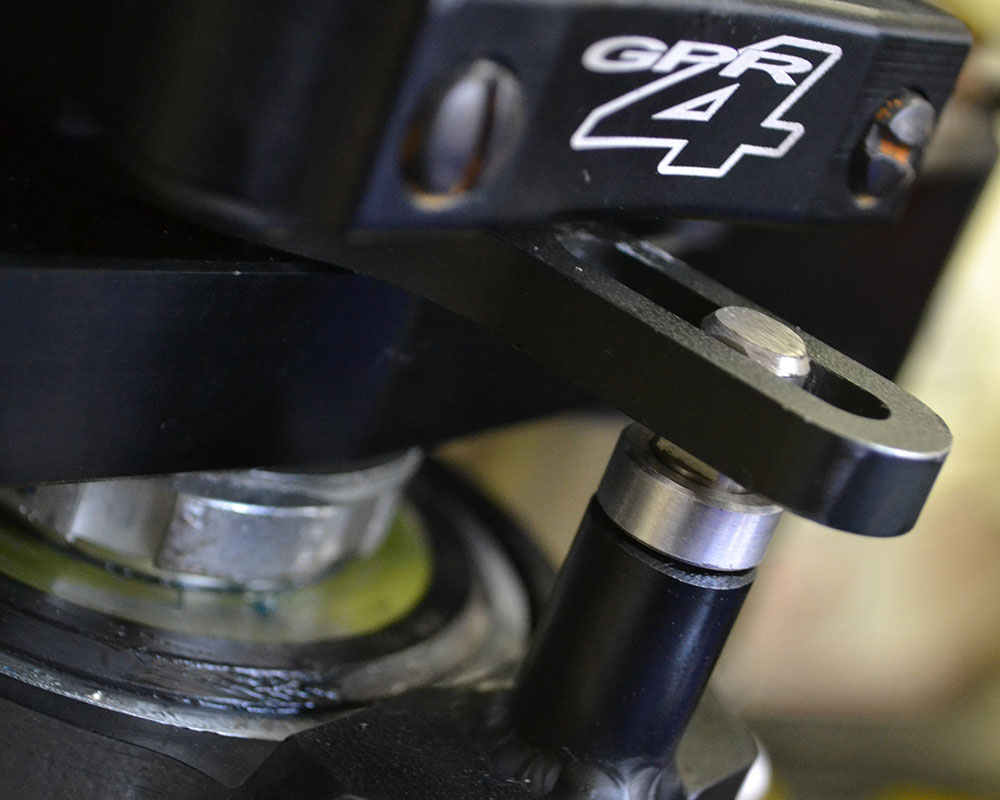


One Response to “GPR Stabilizer Pro Kit”
Dave Lockard
Another nice feature is the isolation rubber designed into the lower bar mount.